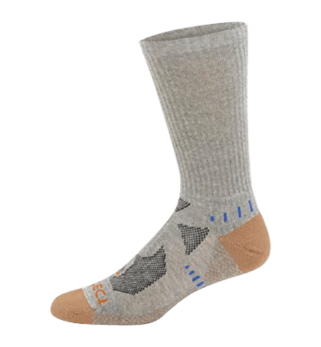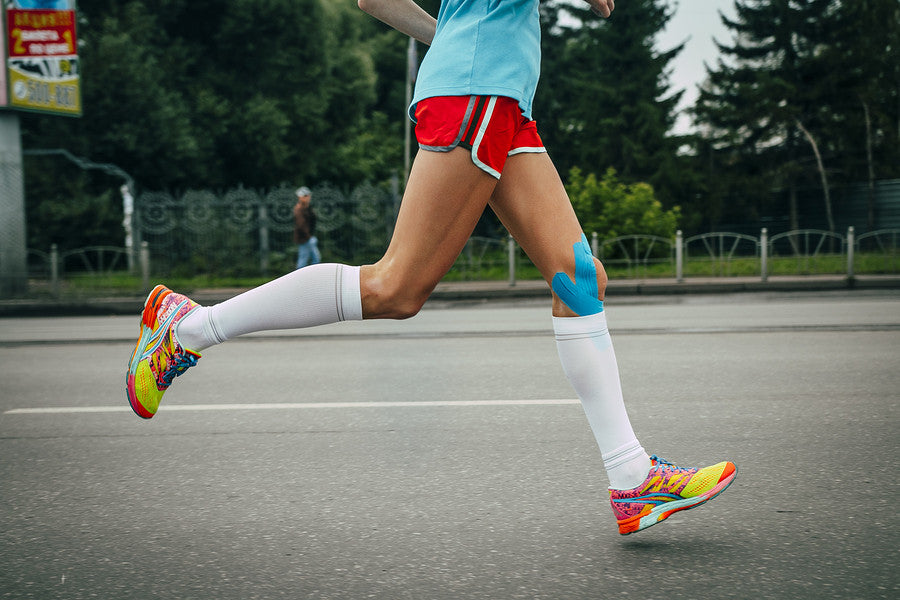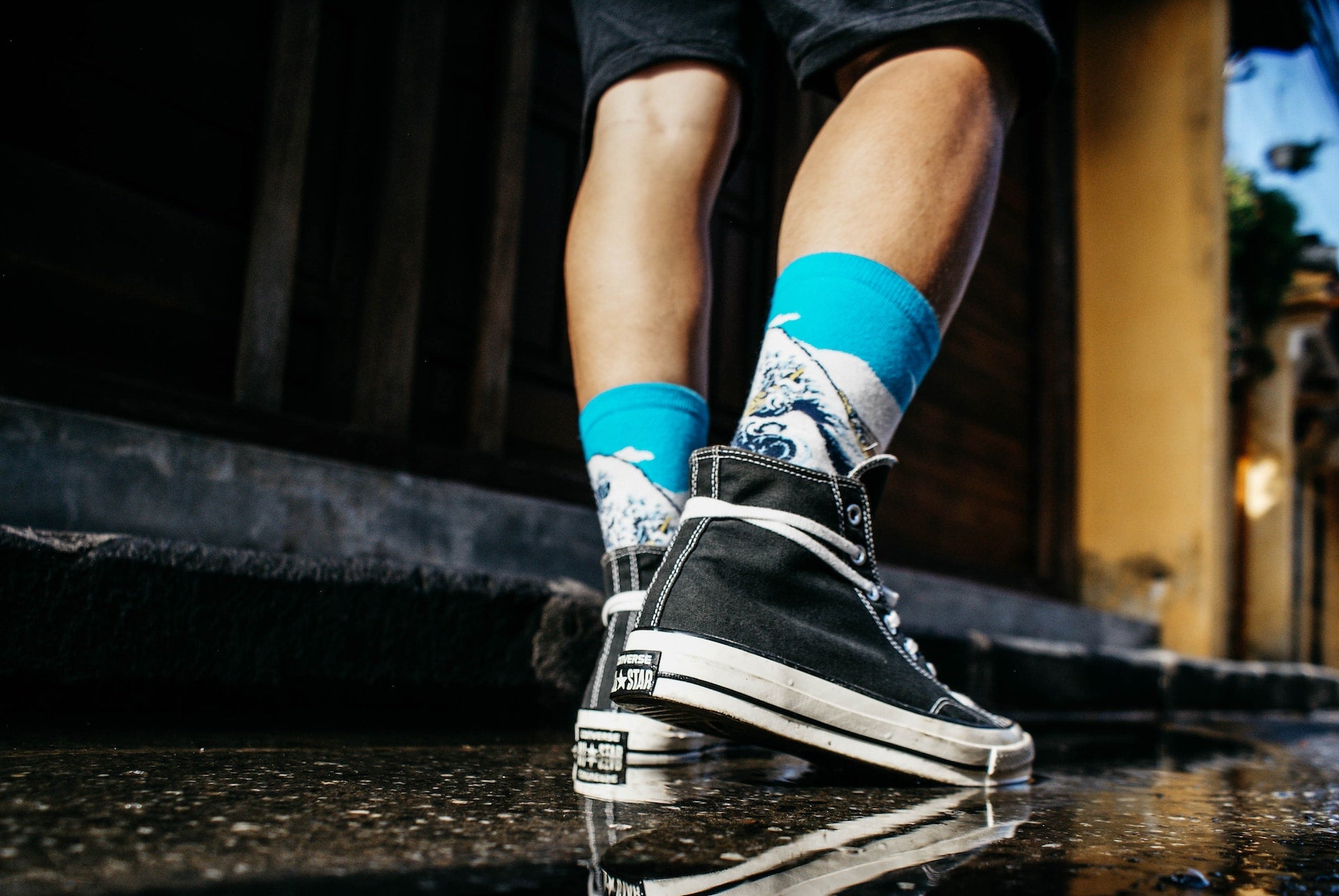
When it comes to garments like socks or stockings, you may have heard the term "graduated compression." But what does it actually mean?
Graduated compression is a style of compression that applies different levels of pressure along the length of a garment. This approach is commonly used in compression socks, where the highest pressure is at the ankle and gradually decreases as the garment moves up to the calf or thigh.
It's important to note that this type of compression differs from standard uniform compression found in everyday elastic clothing items, as it is more specialized and precise in its application.
What Is the Purpose of Graduated Compression Stockings?
These stockings are primarily used to improve blood circulation in the lower extremities and prevent or alleviate venous insufficiency symptoms. Venous insufficiency is a condition where the veins in the legs struggle to effectively return blood back to the heart, leading to symptoms like swelling, varicose veins, leg pain, and fatigue.
Graduated compression helps improve blood flow by applying gentle but consistent pressure on the leg, aiding in venous return. They also serve an important purpose in preventing deep vein thrombosis (DVT).
DVT refers to the formation of blood clots within deep veins, which can be dangerous as they may travel through blood vessels toward vital organs like the heart, lungs, or brain. Socks with graduated compression enhance circulation by promoting proper blood flow through deep veins, reducing the risk of clot formation.
These stockings are commonly used during pregnancy to alleviate discomfort caused by swollen feet or ankles. The increased weight on a pregnant woman's body puts additional pressure on her lower extremities, impeding proper circulation.
Is Graduated Compression the Same as Compression?
Many people are unsure if "graduated compression" and "compression" mean the same thing, but there is a vital difference between the two.
Compression applies a single level of pressure to a specific area of the body, which can be done with garments, bandages, or specialized devices. Its primary goal is to provide support while additionally helping circulation to a certain extent.
Graduated compression refers to garments that exert varying levels of pressure, where they’re strongest at the ankle and decrease upwards toward the body's core. This design helps blood flow efficiently from the legs back toward the heart, preventing pooling in the lower extremities.
It is essential to understand the difference between the different types of therapeutic wear when selecting based on specific medical conditions or needs. Graduated compression is unique in effectively targeting and addressing blood flow and muscle recovery issues over regular compression.
The Benefits of Graduated Compression
Graduated compression stockings offer many benefits to people from all walks of life, such as:
- Alleviate symptoms associated with varicose veins and deep vein thrombosis (DVT)
- Improved muscle recovery
- Increased blood circulation
- Minimizing swelling
- Preventing blood clots during flying or road trips
- Reducing fatigue
Whether you're an athlete looking to enhance your performance or a diabetic seeking relief from leg fatigue and swelling, graduated compression can be a helpful solution.
Are Graduated Compression Socks Good?
Graduated compression socks are an outstanding choice for those looking to improve their overall health, improve comfort, or support an active lifestyle. They can be a game-changer for those on their feet - whether you're a healthcare professional, a retail worker, a frequent traveler, or an athlete.
Which Level of Compression Is Right for You?
Graduated compression stockings are available in various pressure levels, commonly measured in millimeters of mercury (mmHg). The level to be used depends on the severity of your condition as well as the recommendations of your healthcare provider, ranging from:
- Mild compression: 8-15mmHg
- Moderate compression: 15-20 mmHg
- Firm compression: 20-30 mmHg
- Extra firm compression: 30-40 mmHg
We recommend consulting with a healthcare professional for personalized recommendations and proper sizing. It is important to strike a balance between their therapeutic benefits and your personal comfort.
Conclusion: How Graduated Compression Socks Work
Graduated compression socks are designed to exert varying degrees of pressure on the legs, with the greatest pressure applied at the ankle and gradually decreasing towards the calf and thigh. This pressure helps to improve blood circulation and prevent blood from pooling in the lower extremities.
By promoting efficient venous return, these socks can reduce swelling, alleviate leg pain and fatigue, and prevent deep vein thrombosis (DVT) during long periods of inactivity. Graduated compression socks provide comfort and support overall leg health by maintaining optimal blood flow.
In addition to preventing varicose veins and reducing the risk of venous disorders, these socks can enhance athletic performance by increasing oxygen delivery to muscles during physical activity.
It is important to consider factors such as proper fit and appropriate compression level.
It's important to ensure that compression socks fit properly. Socks that are too tight or loose may not provide much benefit and could even cause issues. We recommend talking to your doctor or referring to the manufacturer's size chart.
Incorporating graduated compression socks into your daily routine can benefit your overall health. Whether you’re an athlete seeking more performance or a nurse seeing relief from leg pain or swelling, these socks offer a non-invasive solution supporting overall well-being. So why wait? Embrace the power of compression today and take your health to the next level!





Leave a comment
This site is protected by hCaptcha and the hCaptcha Privacy Policy and Terms of Service apply.